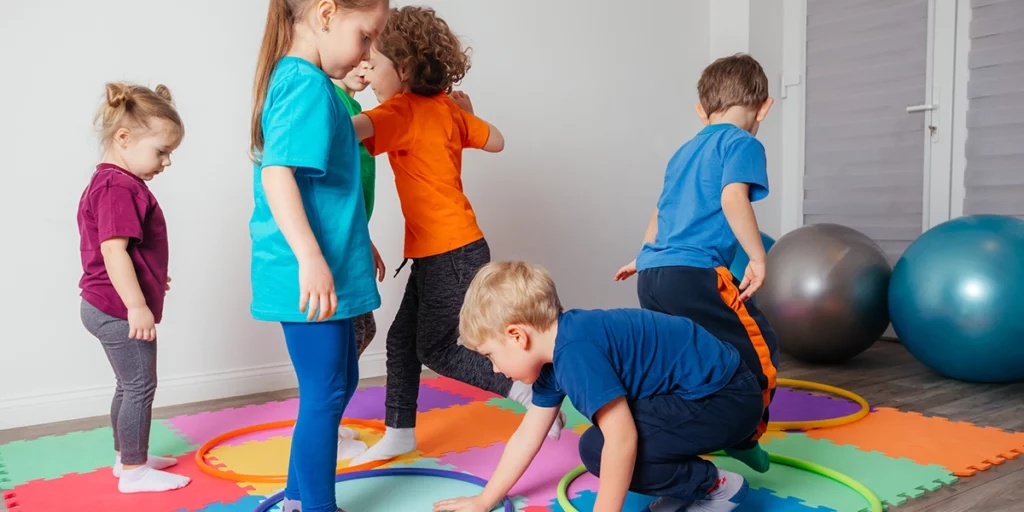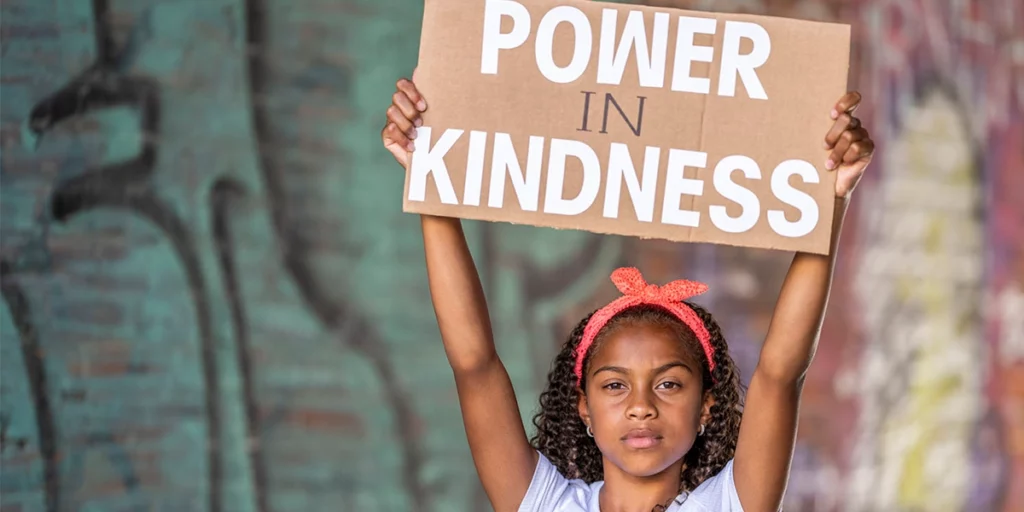Bodily-kinesthetic activities are physical movements that engage the whole body, such as dancing, sports, and yoga. These activities are not only fun but also have significant benefits for children’s development. In this blog post, we will explore the various ways in which bodily-kinesthetic activities positively impact children’s development and why it’s essential to encourage children to participate in such activities from a young age.
Download and Start Your Free Trial of the Safes Parental Control App
What Are Bodily-Kinesthetic Activities?
Bodily-kinesthetic intelligence refers to the ability to control movement and handle physical objects. Children who exhibit this kind of intelligence learn best through hands-on activities and movement. Therefore, children must engage in such activities regularly to enhance their overall development.
Some examples of bodily-kinesthetic activities that provide the above benefits include running, jumping, climbing, and playing sports. These activities allow children to develop their bodily-kinesthetic intelligence and improve their physical, cognitive, emotional, and social abilities.
Benefits of Bodily-Kinesthetic Activities for Children
Bodily kinesthetic activities have numerous benefits for children. Firstly, they improve gross motor skills, balance, and coordination. Children who engage in these activities can control their movements better, leading to improved physical capabilities.
Moreover, these activities also have cognitive benefits, including improved focus, attention, and memory. Children who engage in these activities regularly demonstrate better cognitive abilities than those who don’t. This is because such activities require mental focus and attention, leading to cognitive development.
Additionally, bodily kinesthetic activities provide emotional and social benefits. Children who engage in these activities have increased self-esteem, confidence, and teamwork skills. Such activities require cooperation and coordination, which instill teamwork skills in children.
Finally, bodily kinesthetic activities can facilitate learning. some children are kinesthetic learners. Examples of kinesthetic learners include children who enjoy hands-on activities, fidgeting, or moving around while learning. These children may struggle with traditional teaching methods that rely heavily on lectures and note-taking. By engaging in bodily kinesthetic activities, children can learn in a way that caters to their unique learning styles, leading to improved academic performance and overall well-being.
| Other articles related to children’s intelligence: |

Examples of Bodily Kinesthetic Activities for Children
Here are some examples of activities that fall under the bodily kinesthetic category:
- Sports: From soccer to basketball, children can get a great workout and improve their coordination and teamwork skills through organized sports. They can learn how to set goals, follow the rules, and build self-confidence.
- Dance: Dancing is a fun way for kids to express themselves while improving their balance, flexibility, and coordination. It also helps them develop their sense of rhythm and timing.
- Martial arts: Martial arts like karate and taekwondo teach children self-defense skills while also promoting discipline, focus, and respect. They can also improve their balance, coordination, and strength.
- Yoga: Yoga is an excellent way for kids to develop flexibility, balance, and strength while learning relaxation techniques to manage stress and anxiety. It also helps them improve their focus and concentration.
- Fitness: Activities like jumping jacks, push-ups, and running can help kids stay active and healthy while developing their strength and endurance. It also promotes a healthy lifestyle and boosts self-esteem.
Incorporating Bodily Kinesthetic Activities into Children’s Lives
Incorporating kinesthetic activities into children’s daily routines is essential in promoting their physical, mental, and emotional well-being. This can include setting aside time for outdoor play, participating in family yoga sessions, or scheduling regular sports practices or classes. The key is to allow children to explore and find activities that they enjoy and feel comfortable with. For example, if a child enjoys dancing, enrolling them in a dance class can be a great way to encourage them to be physically active while also developing their love of dance.
For children who have a kinesthetic learning style, incorporating kinesthetic activities into their daily routines can also enhance their learning experience. Kinesthetic learning style examples include practical activities such as science experiments, art projects, and role-playing games. These activities engage children in hands-on experiences, allowing them to apply what they have learned in a tangible and meaningful way.
Benefits of Developing Bodily Kinesthetic Intelligence in Children
Bodily kinesthetic intelligence is one of the eight types of intelligence identified by Howard Gardner. Children with high bodily kinesthetic intelligence have excellent motor control, coordination, balance, and agility. Doing bodily kinesthetic activities can help improve cognitive development by enhancing memory, problem-solving, creativity, and critical thinking skills by increasing blood circulation.

Moreover, studies have shown that children who engage in bodily kinesthetic activities perform better academically. For instance, playing sports can teach children about teamwork, leadership, and communication, which are essential skills in the classroom. Dancing can enhance spatial reasoning and problem-solving skills, which can improve math and science performance. Martial arts can improve self-esteem, self-discipline, and emotional control, which can help children with academic and social challenges.
| Summary:
Bodily kinesthetic intelligence is an essential aspect of cognitive development. Engaging in bodily kinesthetic activities can improve academic performance and cognitive function. Parents and educators should encourage children to participate in physical activities that promote bodily kinesthetic intelligence, such as sports, dancing, and martial arts. |
How Can Safes Help Develop Bodily Kinesthetic Intelligence in Kids?
Safes parental control app offers a unique way to help children develop their bodily kinesthetic intelligence by removing digital distractions and screen addiction. This app provides parents with the ability to limit the time their children spend on digital devices and to block access to certain websites, apps, and games. By reducing screen time, children are encouraged to engage in more physical activities, which can help them develop their bodily-kinesthetic intelligence.
With Safes, parents can also monitor their children’s online activities, ensuring they’re not exposed to inappropriate content. This can help children develop their social and emotional intelligence, as they’ll be able to engage in more meaningful interactions with their peers and caregivers.
Download Safes on your Android or iOS phone or tablet today and benefit from a 14-day free trial with premium features. To learn how to use Safes, use the links below:
- Windows parental controls
- Macbook parental controls
- Parental controls on Android
- iPhone parental controls
| Summary:
The Safes parental control app can help children develop their bodily kinesthetic intelligence by removing digital distractions and encouraging physical activity. By promoting a healthy balance between screen time and physical activity, children can develop a well-rounded set of skills that will benefit them throughout their lives. |
Conclusion
As we’ve seen, bodily kinesthetic activities have numerous benefits for children, including improved physical, cognitive, emotional, and social abilities. These activities allow children to explore and develop kinesthetic intelligence, improving academic performance and cognitive function. Parents and educators should encourage children to participate in activities they enjoy, allowing them to find a lifelong love of physical activity and healthy habits. Parents and caregivers can promote kids’ overall well-being and development by incorporating kinesthetic activities into children’s daily routines, instilling confidence, teamwork skills, and a sense of accomplishment. By embracing bodily kinesthetic activities, children can develop into well-rounded individuals who are physically, mentally, and emotionally healthy.
Your Child’s Online Safety Starts Here
Every parent today needs a solution to manage screen time and keep their child safe online.
Without the right tools, digital risks and excessive screen time can impact children's well-being. Safes helps parents set healthy boundaries, monitor activity, and protect kids from online dangers—all with an easy-to-use app.
Take control of your child’s digital world. Learn more about Safes or download the app to start your free trial today!



![Die Beziehung zwischen Social Media und Aufmerksamkeitsspanne] [Kind mit kurzer Aufmerksamkeitsspanne](https://www.safes.so/wp-content/uploads/2023/08/The-Relationship-Between-Social-Media-and-Attention-Span-1024x512.webp)
